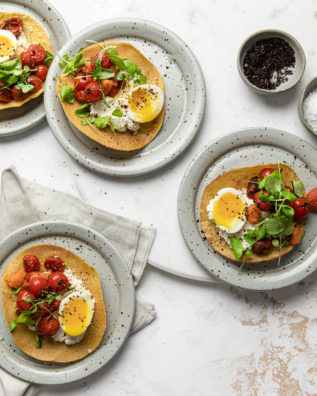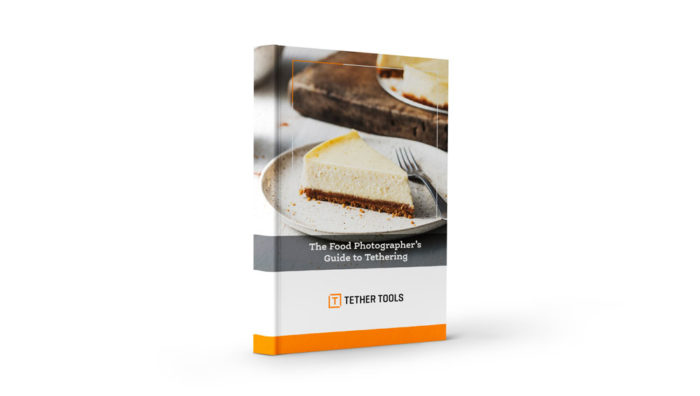
The only constant is change, and as the “norm” changes in restaurant dining, opportunities for food photographers are flourishing. Specifically, the surge of online ordering has increased the demand for better images for restaurants, food brands, and grocery stores.
It’s not just big chain names or big-budget restaurants that are putting out images of their food anymore. Now, along with the Applebee’s and Olive Gardens of the world, your corner deli and that little bakery you adore also need quality images of their food so they can take advantage of online orders. All of this means more opportunities for food photographers.
To make the most of these opportunities, many food photographers have embraced tethering. With tethering, both budding and seasoned food photographers can create delectable images while also improving workflows and the overall client experience.
How Tethering Can Make Your Audience’s Mouths Water
The most important thing about food photography is that it needs to inspire action—and in the case of online restaurant orders, immediate action. When your subject is food, it’s crucial to be captured at its best and most authentic moment to illustrate what the senses can’t experience in person at the restaurant.
You’re not just showing them what the food looks like—you’re showing them what it tastes like. You’re reminding them of how much they love the food and how much they love the restaurant—and you’re making it impossible for them to not order.
Tethering can help with the three most important aspects of your food photography:
1. Food Quality
Since tethering means that the images you shoot can be immediately viewed and edited on your computer, you can adjust as you shoot your food at its best, making sure you have the clearest, sharpest focus, and that the angle is just right. Being able to make adjustments so quickly means no reshooting.
2. Sensory Sensation
You’ve probably heard the phrase, “You eat with your eyes first.” Never has this phrase been as true as it is in the time of rampant online food ordering. The best advice is to keep it as fresh as possible.
Even if you’re just shooting a lunch special grilled cheese, shoot it at the exact moment when you can see the melted cheese peeking out the side of the bread. With tethering, if you don’t get the angle right, you can quickly adjust and still get the winning image with that enticing bit of melted cheese.
3. Atmosphere Impact
Your food doesn’t just have to look fresh and delicious—it needs to be in the right atmosphere. That atmosphere can simply be a vintage-looking plate for an old-fashioned recipe or making sure you can see the beach in the background of your winning seafood platter.
Using tethering for composition gives you hands-free creativity. Maybe that seafood platter against the beach background doesn’t look as good as you had hoped. Make a quick pivot and see what a simple overhead shot looks like on a nautical-themed plate. With tethering, recreating the meal and reshooting aren’t necessary because you can inspect and edit photos while you shoot.
How Tethering Can Improve Workflow and Scale Your Business
Food photographers who use tethering to their advantage usually see a positive change in their workflow—meaning they can be much more efficient, which is one of the keys to scalability.
Because tethering lets food photographers see images as they shoot them, it helps improve three important parts of their workflow:
- Efficiency: Tethering prevents reshooting. While you’re shooting you can check focus or any other aspect of the job. Tweaking and making changes during the shoot does away with expensive, cumbersome food photography reshoots.
- Storage: There’s nothing worse than losing the perfect shot. With tethering, there’s always a backup, so work is always secure. Tethering can eliminate losing any shot—especially the right shot.
- Power: Long shoots can be tiring, and sometimes the most tiring thing is worrying about losing power and interrupting the shoot. With the right tethering gear, you can support long shoots without power interruption.
How Tethering Creates Better Client Connections
A fully tethered workstation can improve the client experience by simply making things more efficient, convenient, and hands-on. With tethering, you can let the client feel like they’re a part of the process by letting them provide real-time feedback. Live view helps the food photographer establish expectations with the client while the mobility tethering affords also allows for connecting with clients around the world.
You can use tethering for reliable live-streaming—adding to the list of reasons why the client would hire a photographer again and again. Making them feel like an active part of the creative process, being able to provide them with the exact images they want fast, and showing them you’re a reliable partner will all build your client connections.
Learn More About Upping Your Food Photography Game with Tethering
Whether it’s creating better food photos, a more efficient workflow process, or better relationships with clients, tethering is the modern food photographer’s not-so-secret weapon.
In a world where images are everywhere, learn more about making your food photography stand out. There’s a lot more that tethering can do for your photography and your business—so much, in fact, that we wrote a tethering guide just for food photographers. We want to help you up your game, so you don’t want to miss it. Download The Food Photographer’s Guide to Tethering now!



